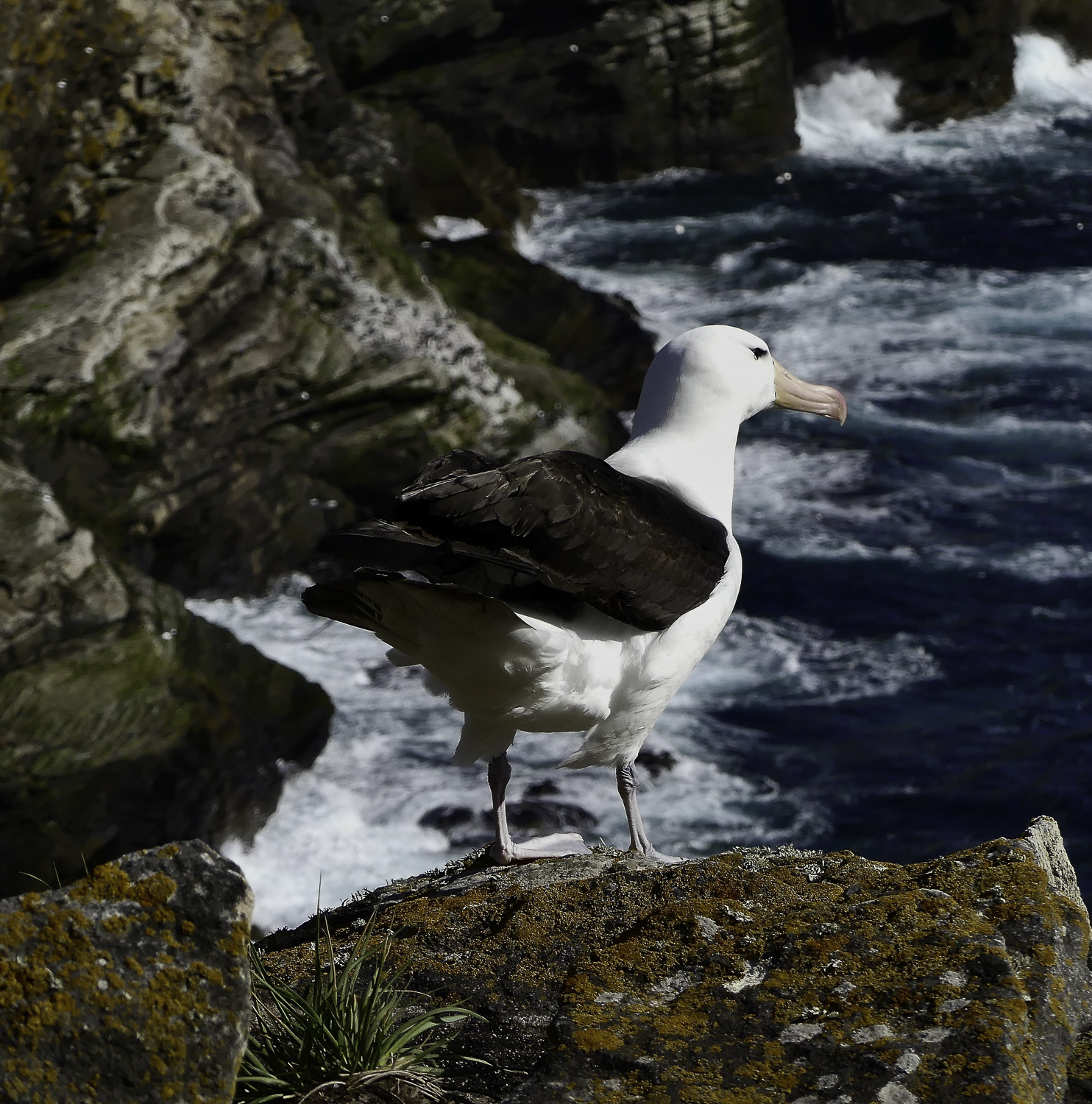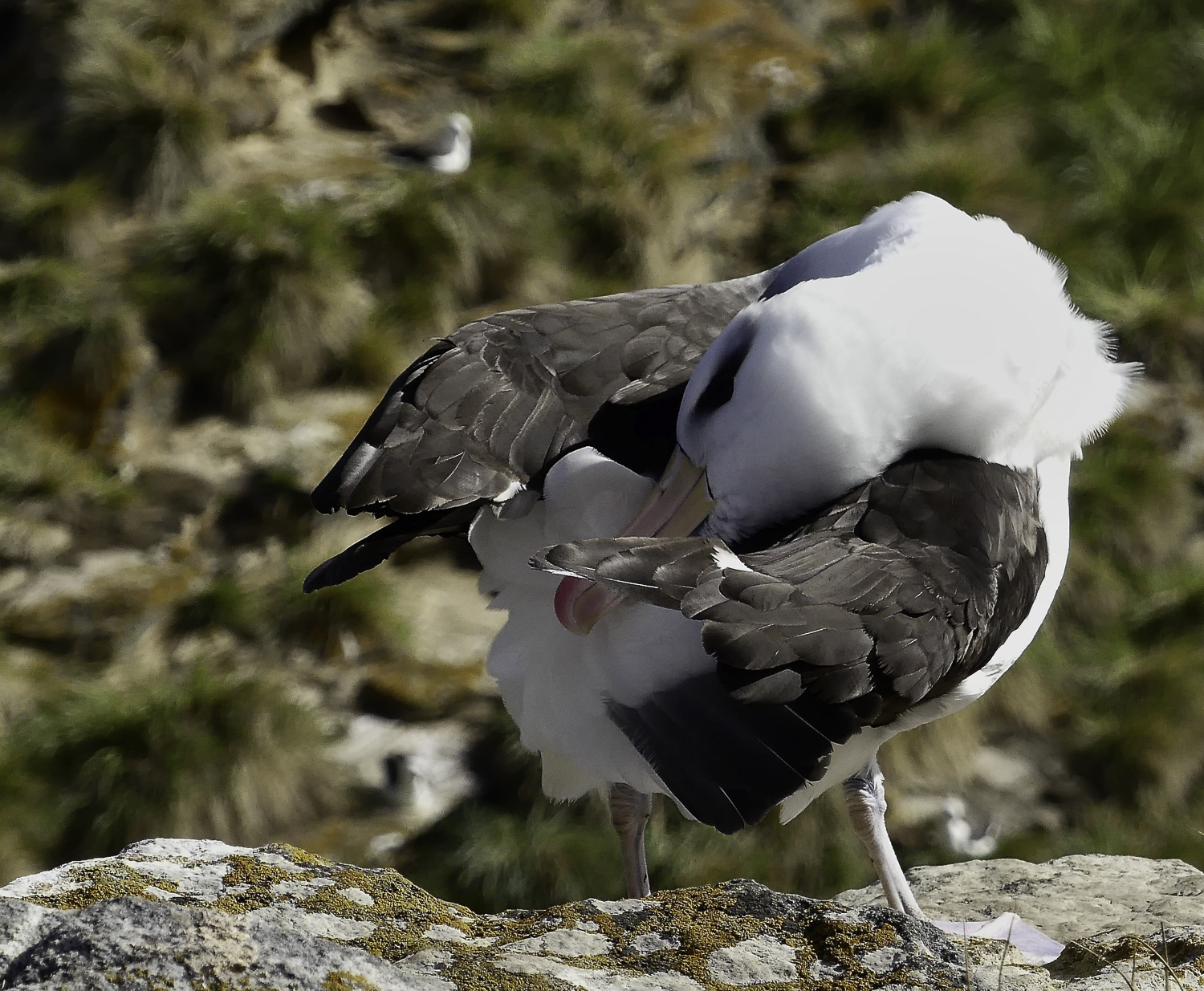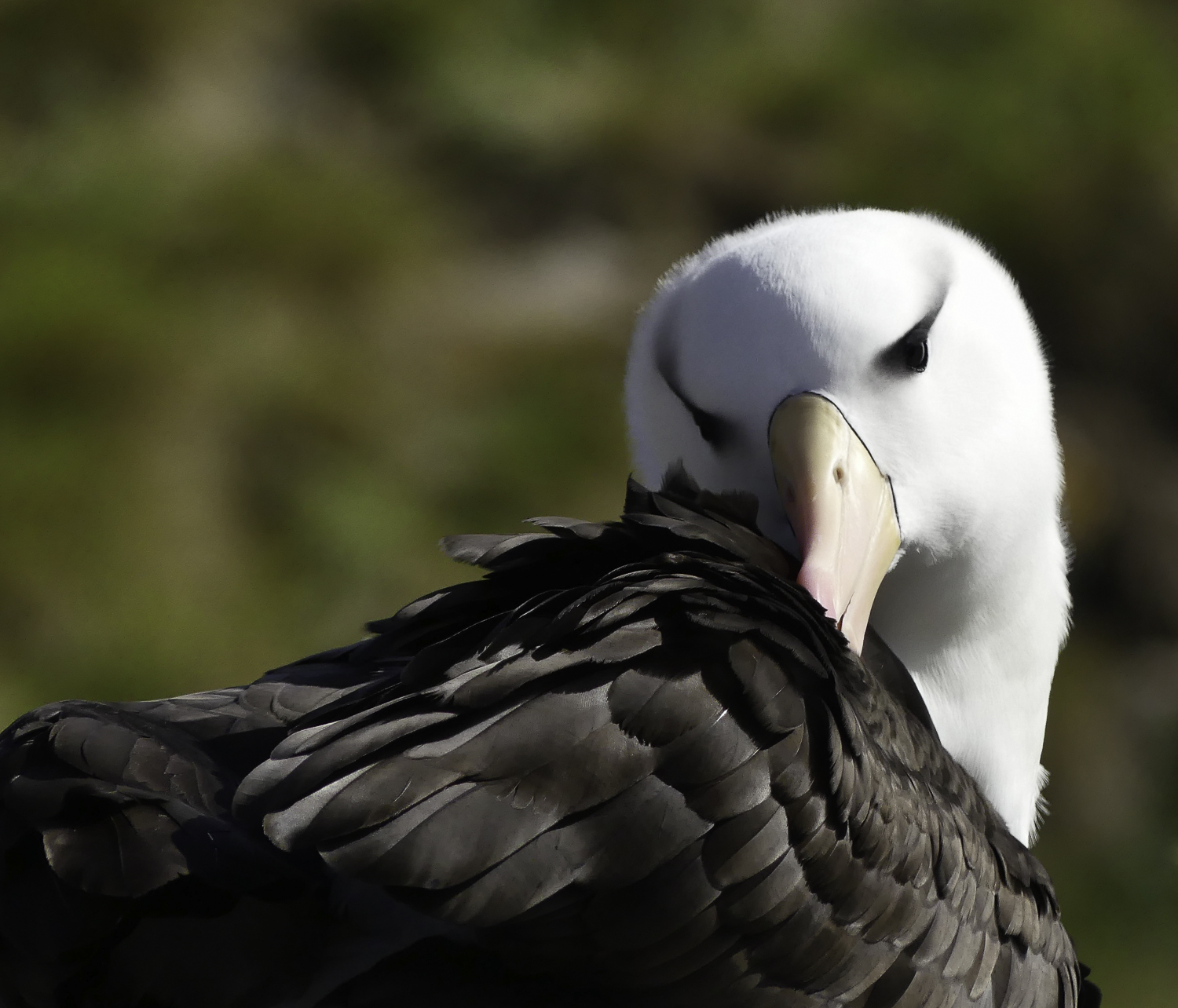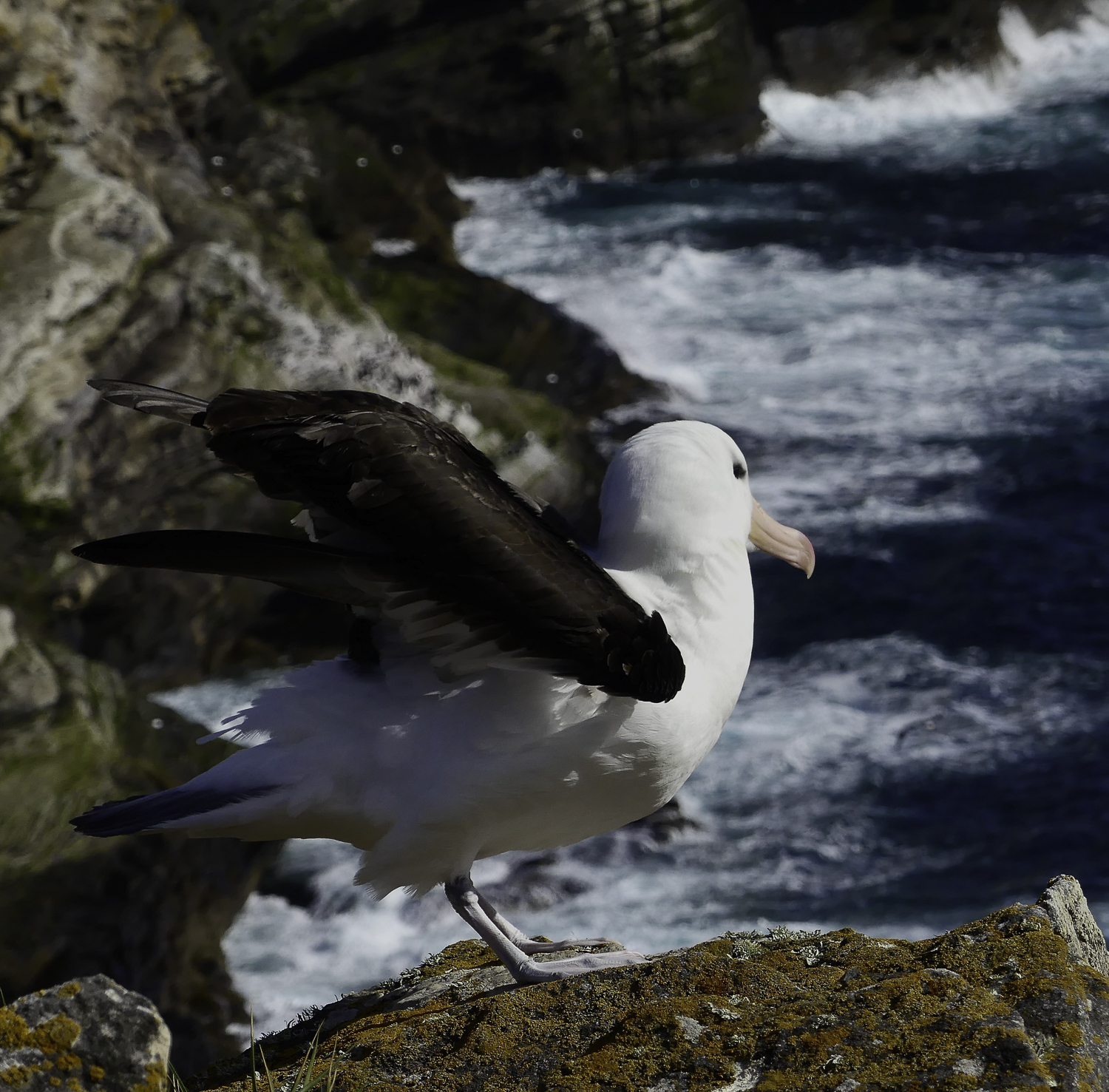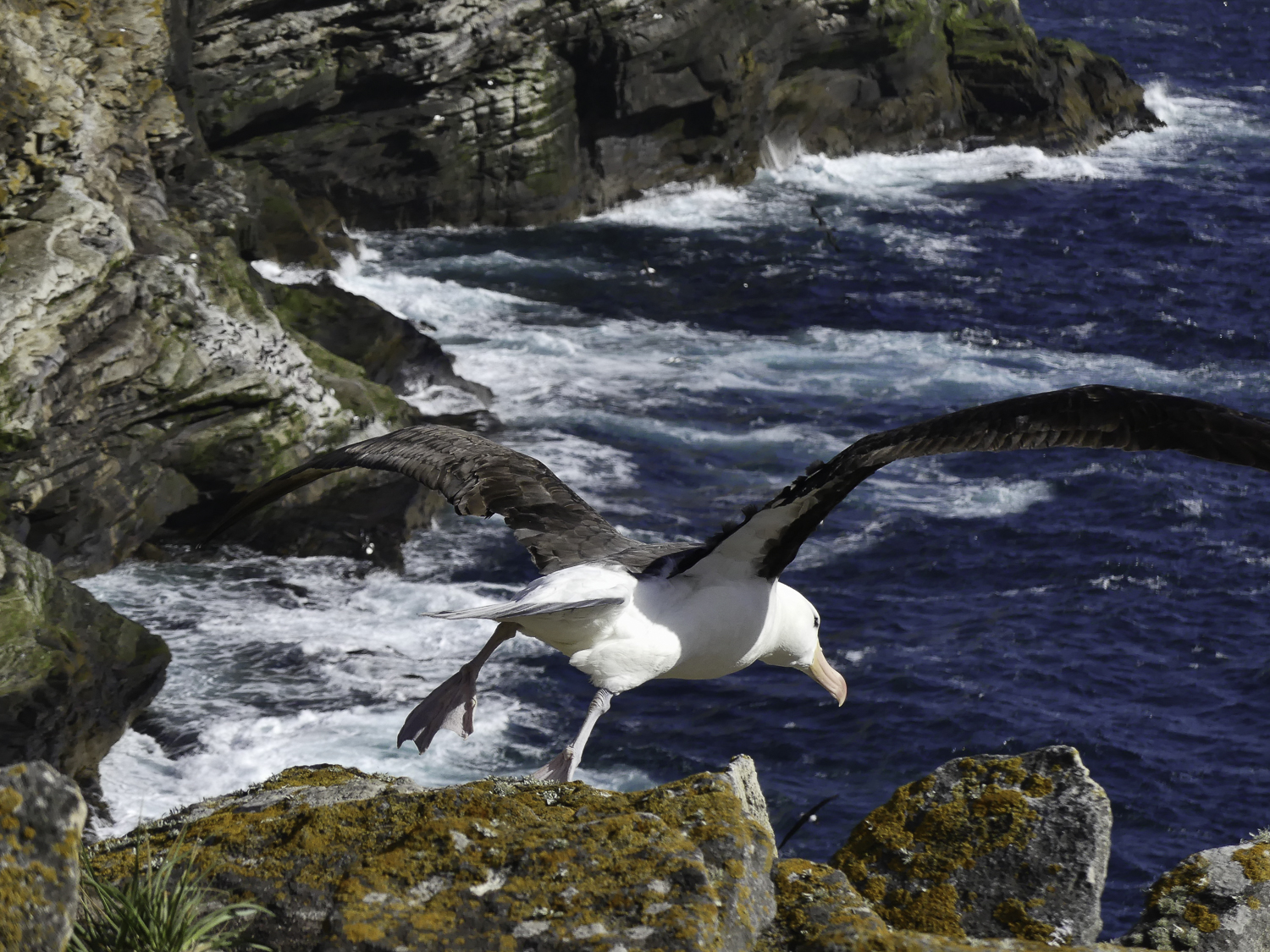ePostcard #90: Ready to Fly (Black-browed Albatrosses)
ePostcard #90: Ready to Fly (Black-browed Albatrosses)
Since their first glimmerings in dinosaurs about 250 million years ago, feathers have evolved into one of nature’s most powerful and beautiful adornments. Feathered flight, of course, evolved with a suite of anatomical and physiological specializations that helped birds colonize the far corners of the globe—reductions in body weight suited to an airborne existence, an exquisite feathered cloak that both insulates and streamlines the body, and enhancements in the power and endurance needed for long-distance flight. Now, think about an albatross and the fact that they basically spend only a few months on land to breed. The rest of the year they are ocean voyagers, gliding effortlessly through the giant wave troughs of the high seas. Albatrosses tap the wind’s energy and use it as an essential life force as they navigate their global ocean realm.
We often use aeronautical terms to describe the mechanics of flight, but bird wings are superior to aircraft wings in many ways. Bird wings can instantaneously change shape and orientation for split-second maneuverability and changes in speed. One of the most amazing things about bird wings is that they can incur significant damage, including lost or broken feathers, and still provide safe flight. Birds have the remarkable ability to “repair their wings through feather replacement. I have read that birds can have up to 25,000 feathers on their bodies, and these would include the primary and secondary flight feathers that make up their wings, and the contour and down feathers that cloak and protect the body.
No matter their species, lifestyle or preferred habitat type, all birds preen (groom) to keep their feathers in top condition. Second only to feeding, daily preening is a critical behavior that helps ensure their health and survival. While preening, birds remove dust, dirt, and parasites from their feathers and align each feather in the optimum position relative to adjacent feathers and body shape. In the case of albatrosses, given their long-distance flights and the countless storms they experience at sea, the care of each one of those feathers is a top priority.
The preening, or uropygial gland, is especially important for all bird species that regularly come in contact with either fresh or saltwater. Some types of birds, including owls, pigeons, parrots, and hawks, lack a uropygial gland. Instead, these birds have specialized feathers that disintegrate into “powder down,” which serves the same purpose as preen oil. Birds that produce powder down are less likely to bathe or immerse themselves in water and do not require the stronger waterproofing that preen oil provides. Seabirds and other waterbird species have a uropygial gland, located conveniently near the base of the tail, which produces an oily, waxy substance that helps waterproof feathers and keep them flexible. Birds use their bills and feet to spread this oily secretion to each feather on their body, methodically nibbling or stroking every feather from its base to its tip to get it aligned just so. If you watch birds you are probably familiar with the different contortions birds will use in order to reach every feather. It is not unusual to see them assume almost yoga-like positions while preening. (photos #2, #3 and #4).
Much like an aircraft pilot referring to a Flight List, before this black-browed albatross takes off for a long-distance flight across the ocean it will follow its own “checklist,” including:
- Moisturize feathers with preen oil so they are flexible and strong, instead of brittle and easily breakable. This helps feathers better withstand the stress of flight.
- Align feathers for optimum waterproofing and insulation to protect against adverse conditions, such as soaking or extreme hot or cold temperatures.
- Align feathers into the most aerodynamic shape for easier, more efficient flight. This helps birds use less energy in flight and make more acrobatic moves.
- Remove parasites and body lice that can destroy feathers or carry disease.
- Remove tough sheaths from newly molted feathers. Removing these sheaths helps gets feathers into the proper position more quickly so they can be useful right away.
Our albatross walks towards the edge of the cliff, stretches and unfolds its wings, and uses both feet to launch itself powerfully into the air. Next stop—Tierra del Fuego!
click images to enlarge
click images to enlarge
To help build global awareness, we would appreciate it if you would share this post with your friends and colleagues. Please choose one of the options below which includes email and print! Thank you.

